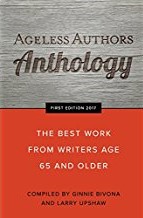On November 1, I ran errands at my favorite strip shopping center. Located three miles from my house, it is anchored by Hobby Lobby on one end and Staples on the other. In between, Dollar Tree, Pet Supplies Plus, Russo’s Subs, and Burlington Coat Factory are frequent stops. A free standing Chick-fil-A is crazy busy. Well, the whole complex is crazy busy, but there are still far off parking spots where I park for added exercise and less chance of getting a dent in my car. I developed this habit when I worked on a college campus, and it serves me well in my Parkinson’s life!
In four stores, I overheard conversations about the calendar flip. “I can’t believe it is November 1.” “Where has the year gone?” “It will be Christmas before you know it.” “The year goes faster every year.” “What are you doing for Christmas?” “After Halloween, it’s downhill fast.”
Honoring Thanksgiving
What intrigued me was not one word was said about Thanksgiving! Hobby Lobby has had Christmas decorations out since August where I live. But the day after Halloween, the staff was making room for even more Christmas stuff by moving Halloween items (what little was left) to sale tables. I specifically went to Hobby Lobby to buy fall wreaths for my upper and lower front doors. I left empty handed. Oh, they had some. But the fall décor was smashed together in a couple of aisles, almost like an afterthought. I will just continue using last year’s fall decorations since it will be time to put up the Christmas wreaths in a few weeks. I may even have to put them up earlier since time is now going faster!!
The experience reminded me how much I love Thanksgiving and how much I hate the idea that it gets overshadowed by Halloween and Christmas commercialization. The mega retailers are advertising their Thanksgiving shopping hours, so we can plan our family get-togethers around buying. The Hallmark channel has been showing Christmas movies since way too soon! I understand “why” from a marketing perspective as I have taught these concepts to hundreds of university students over the years. But it does not mean I have to embrace the concept! My Thanksgiving traditions have evolved, and without knowing it, I was creating a Parkinson’s proof Thanksgiving free of stress that I would someday need.
Who Cooks?
Joe and I live in Florida and do not travel to Missouri for Thanksgiving where our families live. Our Thanksgiving tradition has changed from me doing all the cooking when we had a long distance relationship to now going out. Joe use to fly in from White Plains or Orange County or Atlanta (he’s lived all over and in some terrific places!) on the day of Thanksgiving. In 2001, I decided preparing this feast for two needed to be a two-person operation. He readily agreed and flew in the night before to help make pumpkin pies. Then it was up early the next day to get the turkey in the oven, make the candied sweet potatoes, Waldorf salad, and oyster dressing (which he was not too sure about). But oyster dressing is my favorite part of the meal (as it was my mother’s)! He was a good sport and helped with all the preps. But I think he enjoyed the sitting down and eating part more! It’s a toss-up for me as I love to do both!
The following year Joe suggested we go out for Thanksgiving. I was not too keen on the idea, but he easily persuaded me with a reservation at The Breakers Palm Beach. In 2003, I thought we would stay home and rub shoulders in the kitchen. I really do love to make Thanksgiving dinner. However, by then Joe was planning to move to Miami Lakes and was looking for a place to buy. He had several real estate appointments scheduled for the day after Thanksgiving and wanted me to go with him. So we had a lovely Thanksgiving dinner at The Breakers again.
15 Thanksgiving Dinners at The Leopard Lounge
We had several reasons to be thankful in 2004. Joe made the move to Miami and was now just 76 miles from my house. He was acclimated to South Florida living quickly, but harshly, as we endured Hurricane Frances on September 4 followed by Hurricane Jeanne on September 26. I was without electricity for two weeks and without water for one week. Weary from hurricane clean-up and repair, we decided to try Thanksgiving dinner at my favorite little English hotel, The Chesterfield on Palm Beach. It has proven to be the right venue for the two of us as November 22, 2018 will mark our 15th Thanksgiving dinner in the Leopard Lounge at Chesterfield! In between, I held my Tatianna book signing party in the hotel’s library in 2007.
Parkinson’s Proof Thanksgiving
We reserve for the one o’clock Thanksgiving seating and depart with enough left-overs for two more meals. Strolling down Worth Avenue after our feast is a perfect way to end the afternoon. No shopping, (nothing is open) just window shopping and people watching! I add my touch to the holiday by making cranberry relish on Wednesday and baking one pumpkin pie on Friday. We have plenty to eat and stay home on Friday—no malls, no traffic, no stress!
Question to Ponder: What is your favorite way to spend Thanksgiving?
Blessings!
Linda













